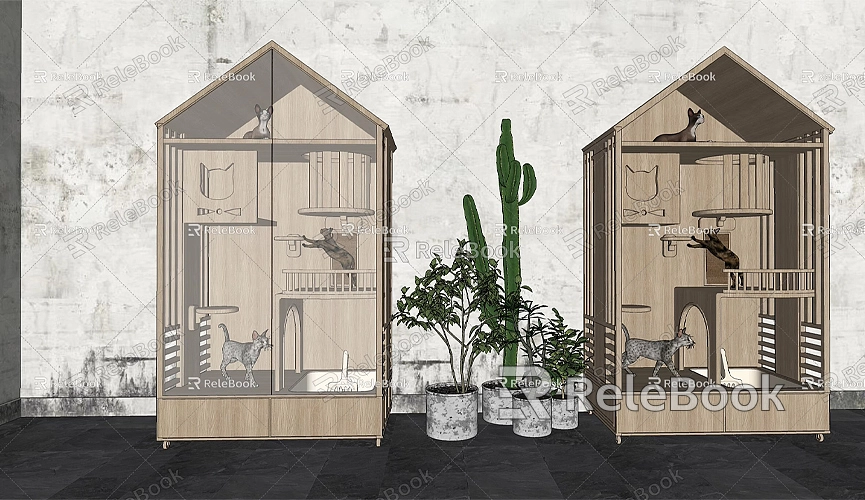How to Cut Model in SketchUp
Cutting models in SketchUp is a common operation, whether in architectural design, interior design, or product design. This process helps designers manage complex geometries more effectively. This article will detail methods and techniques for cutting models in SketchUp to enhance your workflow.
Understanding the Basic Concept of Cutting Models
Cutting a model typically involves using specific tools to divide a complex model into multiple parts. This makes it easier for designers to edit, adjust, or rearrange various components. Cutting not only simplifies workflows but also helps organize the model structure.

Using the "Cut" Tool
SketchUp provides a "Cut" tool that allows users to slice through a model by drawing lines. Here are the steps to use the "Cut" tool:
- Select the Tool: Find and select the "Line" tool from the toolbar.
- Draw the Cutting Line: Draw the desired cutting line on the model, ensuring the lines connect to different faces of the model.
- Use the "Push/Pull" Tool: After drawing the line, select the "Push/Pull" tool, click on the cut area, and push inward to slice the model. Adjust the depth of the push to ensure an accurate cut.
Utilizing the "Group" Feature
Before cutting a model, it's essential to effectively use the "Group" feature. Grouping the parts you want to cut can prevent unintended changes to other parts.
- Select the Parts to Group: Use the selection tool to choose the parts you want to cut.
- Right-Click and Select "Create Group": This will convert the selected parts into a group for easier management.
- Maintain Group Integrity While Cutting: Ensure you only cut the selected group during the process to avoid affecting other sections.
Using the "Boolean Operations" Tool

Boolean operations are an advanced modeling technique that allows you to cut models by combining or subtracting shapes. You can use plugins to perform Boolean operations in SketchUp effectively.
- Install a Boolean Operations Plugin: Search for and install an appropriate Boolean operations plugin, such as "Solid Tools," from the Extension Warehouse.
- Select Objects: Choose the model you want to cut and the shape you’ll use for cutting.
- Execute the Operation: Use the Boolean functions provided by the plugin, selecting options like "Subtract" or "Intersect" to cut.
Check the Cut Model
After cutting, carefully inspect the model's integrity. Ensure that the edges are smooth and that no unexpected holes or irregular faces have appeared. Use the "Select" tool to check each cut part individually to confirm it meets your expectations.
Adjusting Materials and Textures
After cutting the model, you may need to readjust materials and textures. Some materials may be affected during the cutting process, so it's advisable to:
- Check the Materials: Open the materials panel and inspect the cut sections to ensure correct material application.
- Reapply Materials: If certain areas have incorrect materials, manually replace them to maintain visual consistency.
Using High-Quality 3D Resources
When creating and cutting models, high-quality textures and 3D models can significantly enhance your design. If you need high-quality 3D textures and HDRI while creating models and virtual scenes, you can download a variety for free from [Relebook Textures](https://textures.relebook.com/). For exquisite 3D models, visit [Relebook Models](https://3dmodels.relebook.com/), which offers a wide selection of quality 3D resources. These assets can add more detail and realism to your designs.
Cutting models in SketchUp is a fundamental and essential skill. By effectively using the "Cut" tool, grouping features, and Boolean operations, you can efficiently handle complex models. After cutting, remember to check and adjust materials to ensure the final effect is as desired. I hope this article provides practical assistance in your design process, making you more adept in SketchUp!

